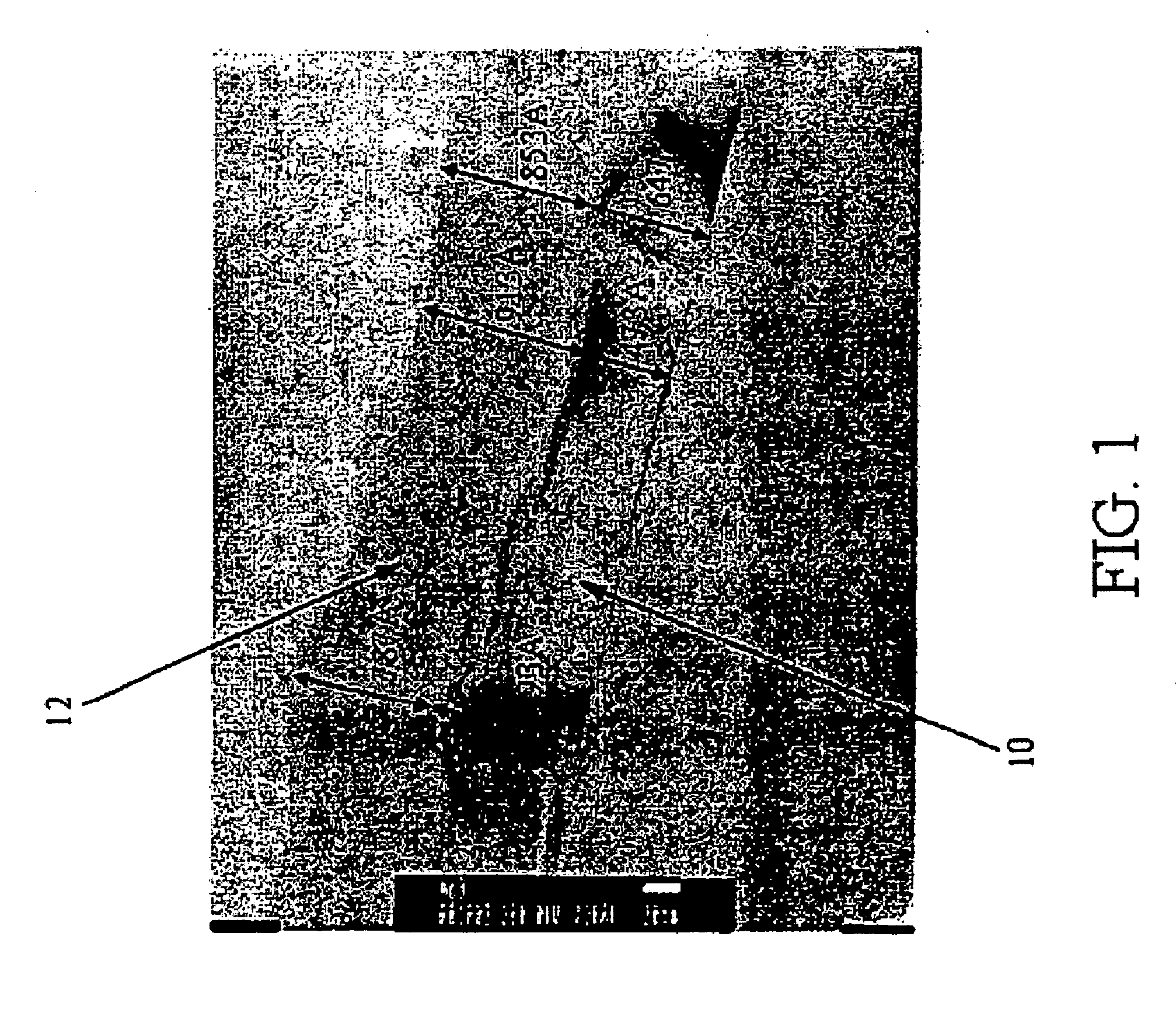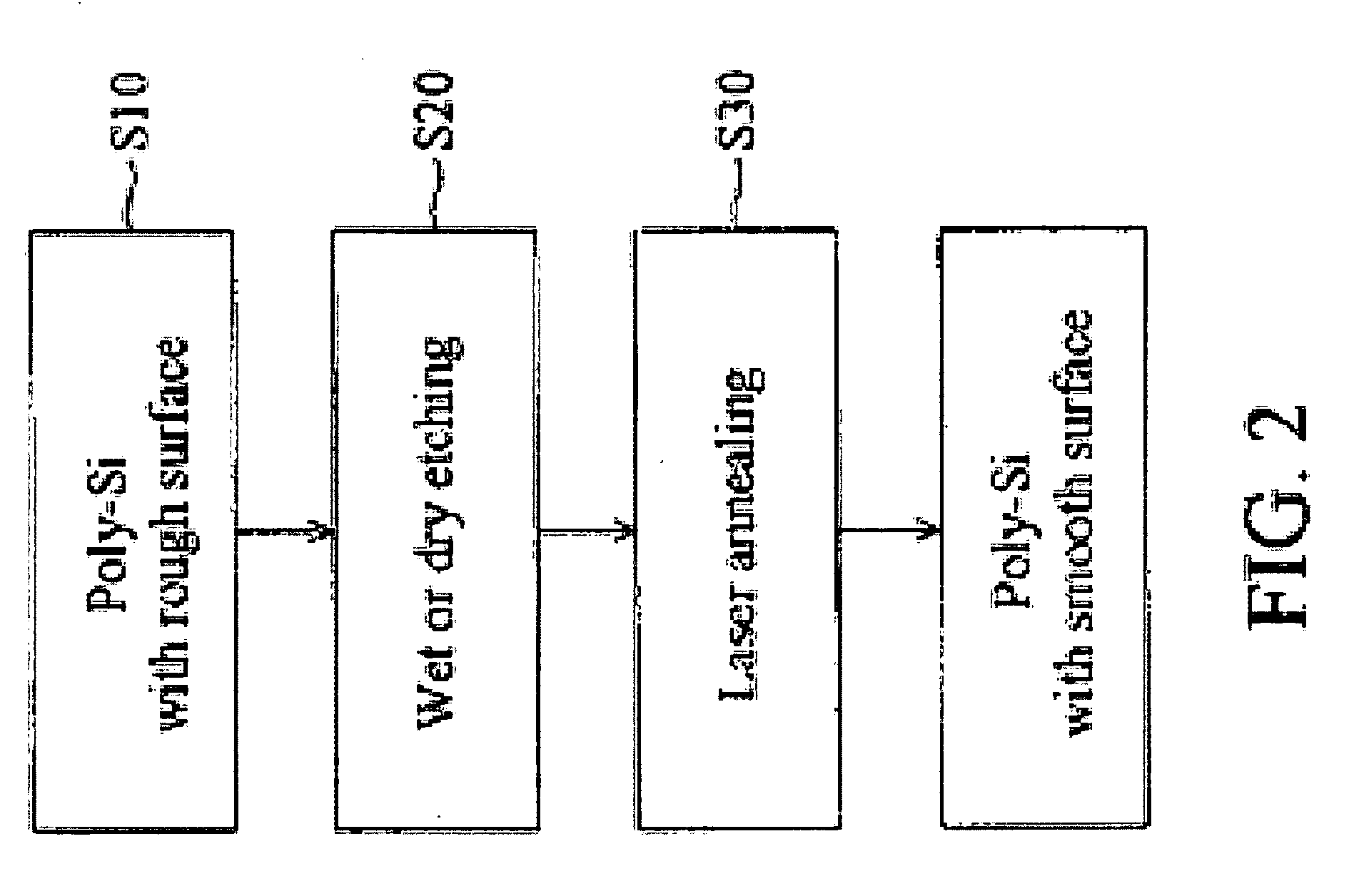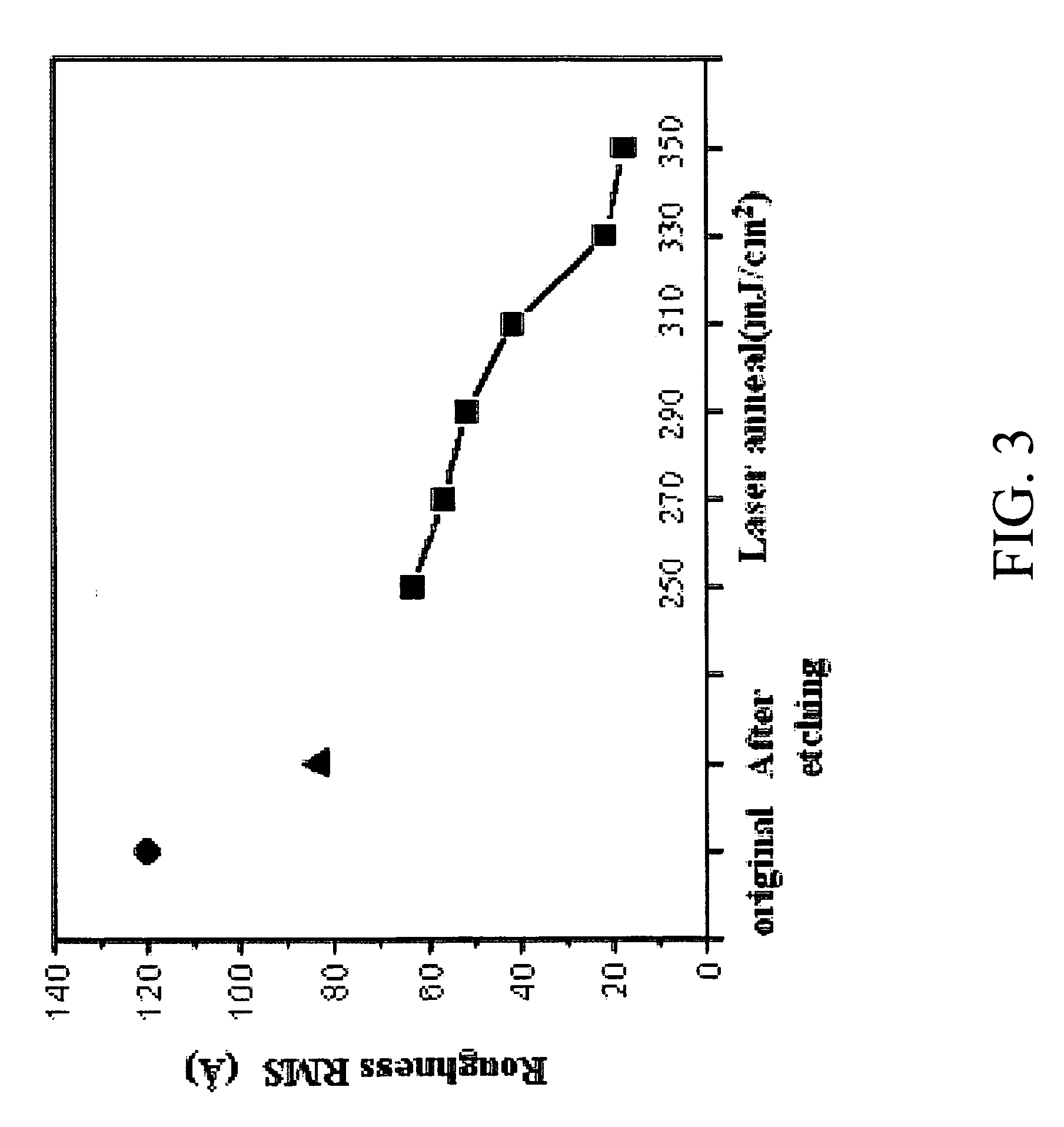Method for planarizing polysilicon
- Summary
- Abstract
- Description
- Claims
- Application Information
AI Technical Summary
Benefits of technology
Problems solved by technology
Method used
Image
Examples
Embodiment Construction
[0033]FIG. 2 illustrates a process flow of a method for planarizing polysilicon in accordance with one embodiment of the present invention. Referring to FIG. 2, a substrate formed with polysilicon on a surface is provided at step S10. Formation of the polysilicon is not restricted to a particular method, and may be attained by, for example, laser crystallization or chemical vapor deposition. Next, at step S20, an etching process is carried out to change the surface structure of the polysilicon. In one embodiment, buffered oxide etchant (“BOE”) is used as an etching solution. During the etching process, native oxide, weak bonded silicon and impurities in the polysilicon surface are removed. Components of the BOE solution are HF, NH4F and H2O. A preferable ratio of the BOE to water is 1:300˜1:0. In another embodiment, diluted hydrogen fluoride (“DHF”) is used as an etching solution. The preferable ratio of hydrogen fluoride to water is 1:600˜1:1. Preferable time for wet etching is les...
PUM
| Property | Measurement | Unit |
|---|---|---|
| Fraction | aaaaa | aaaaa |
| Density | aaaaa | aaaaa |
| Ratio | aaaaa | aaaaa |
Abstract
Description
Claims
Application Information
 Login to View More
Login to View More - R&D
- Intellectual Property
- Life Sciences
- Materials
- Tech Scout
- Unparalleled Data Quality
- Higher Quality Content
- 60% Fewer Hallucinations
Browse by: Latest US Patents, China's latest patents, Technical Efficacy Thesaurus, Application Domain, Technology Topic, Popular Technical Reports.
© 2025 PatSnap. All rights reserved.Legal|Privacy policy|Modern Slavery Act Transparency Statement|Sitemap|About US| Contact US: help@patsnap.com



